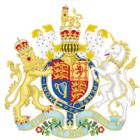Parliamentary Boundaries (Ireland) Act 1832 facts for kids

|
|
| Long title | An Act to settle and describe the limits of cities, towns, and boroughs in Ireland, in so far as respects the election of Members to serve in Parliament. |
|---|---|
| Citation | 2 & 3 Will. 4. c. 89 |
| Territorial extent | Ireland |
| Dates | |
| Royal assent | 7 August 1832 |
| Other legislation | |
| Relates to | Representation of the People (Ireland) Act 1832 |
|
Status: Repealed
|
|
The Parliamentary Boundaries (Ireland) Act 1832 was a law passed by the Parliament of the United Kingdom. Its main job was to draw the exact borders for 33 special voting areas, called parliamentary boroughs, in Ireland. These areas would then elect members to the United Kingdom House of Commons.
This Act was needed because of another important law, the Representation of the People (Ireland) Act 1832. Both laws were passed on the same day in 1832. This was part of a bigger change in how people voted across the UK, following the Reform Act 1832 which changed voting rules in England and Wales.
Before this Act, some cities like Dublin and Cork already had two Members of Parliament (MPs). The new law gave a second MP to other important cities in Ireland. These included Belfast, Galway, Limerick, and Waterford.
Also, the number of MPs for Ireland increased from 100 to 105. Dublin University also gained an extra MP, going from one to two. The 32 counties in Ireland continued to send two MPs each to Westminster.
The new voting area definitions were first used in the 1832 United Kingdom general election in Ireland later that year. Over time, some changes happened. For example, in 1870, the towns of Cashel and Sligo lost their right to elect MPs because of problems with corruption.
The boundaries set by this Act were later replaced by new ones in 1885. The Act itself was eventually cancelled. It was repealed for the Republic of Ireland in 1963 and for Northern Ireland in 1950.
What the Act Did
This law was very detailed. It listed the exact boundaries for each of the 33 parliamentary boroughs in Ireland. These descriptions used landmarks like rivers, roads, walls, and specific buildings to define where each voting area began and ended. This made sure that everyone knew exactly which area they belonged to for elections.
See also
- List of Acts of the Parliament of the United Kingdom

